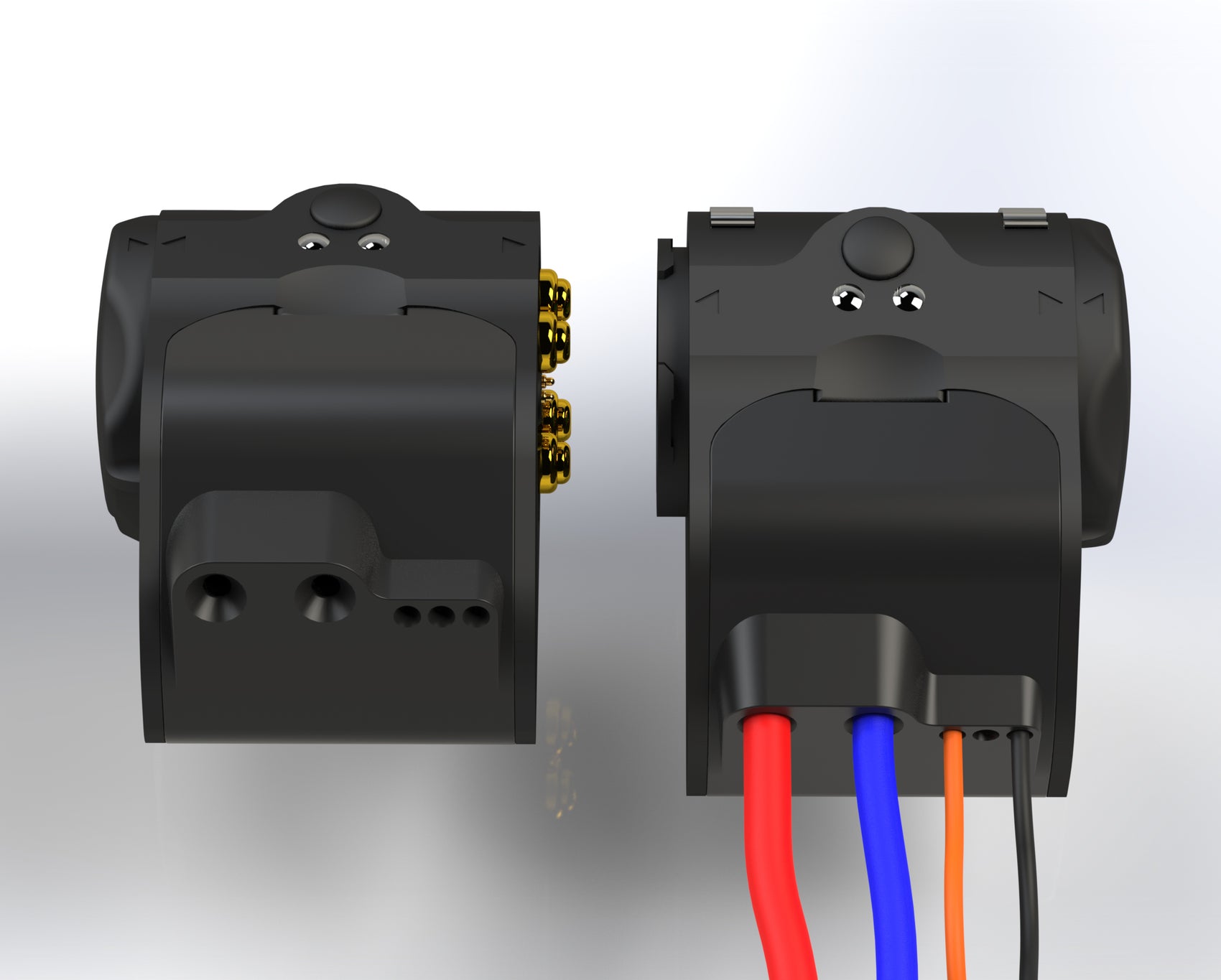We started working on a power distribution unit in 2016. The goal was to create something that would activate things (fans, pumps, lights and even nitrous solenoids) using vehicle data from the OBD2 port.
It all started on a 17 hour drive home from Coalinga, CA after a Shift-Sector event. We were talking about adding sensors to a Twin-Turbo Corvette with a stock PCM. We were going to have to add redundant sensors which didn't sit right with me. I wanted to use the sensors the car already had! I started looking online for a device that would take OBD2 vehicle data (throttle, vehicle speed, front wheelspeed, rear wheelspeed, etc. and use it to activate a device or switch a relay. I was blown away when I couldn't find anything so I kept looking. I eventually stumbled on a smart developer (Devbutton.com) who had done some custom CAN development and I sent him an email.
Fast forward a few months and we're working together to create what we called the "Output Controller." For the next 8 months we continued working and developing the device and we eventually realized that it was growing in complexity and shrinking in market potential. Besides that, we had found similar devices on the market and to make ours any magnitude greater was going to cost more dollars, hours and technical resources than we had. So it died.
We could have cut down the features, and we could have made it cheaper but that's not what wakes me up in the morning. Making things BETTER is what wakes me up in the morning. Just making things that sell isn't good enough.
Over the next year I was marinating on the idea and I just kept building and tuning cars (for those who don't know, we mostly do late model GM) but I hated how it looked when we installed relays. Every car needed multiple relays, and no matter what, I just couldn't get over how crappy and outdated they were. So it dawned on me, make a relay that connects right up to the relay next to it and gets it’s power and ground from the first one and make it look like it was designed sometime after Magnum PI lost his mustache. Then every relay can be installed in half the time and look way cleaner!
Boom!
So this thing became my #1 priority in November 2017, and at the time my wife was 8 months pregnant and I was running my shop and working on the relay every chance I got. I literally contracted my first engineer on December 22, the day after my son was born as I lay in the hospital with my wife!
I’ve spent the last two years reconfiguring the product, testing power chips and iterating the enclosure design thousands of times (I wish that was an overstatement). As of April 2019 we have functioning, custom PCBs designed to work within our patent pending enclosure and with our custom power distribution system of buss bars and pogo pins.
At the time of this article the device is officially referred to as the Kaizen Relay and is a utility patent pending "modular power distribution device," a.k.a. a relay. It's a weatherproof, solid-state relay that directly replaces standard relays and can be triggered with power or ground. The ability to connect relays together while they remain connected to wiring is patent-pending and 100% unique to our product. Nothing here is regurgitated, it's a clean sheet design; from electronics to enclosure.
The interlocking side ports also allow for optional modules to attach and that's where it gets interesting. In partnership with CANtrolls we've designed a programmable CAN enabled module that can attach directly to the side and pulse or trigger the relay based on CAN messages. Manufacturers can create custom firmware for activating everything from auxiliary fuel pumps at WOT to Line Locks when factory cruise control buttons are pressed. It can be programmed by the end user, or come pre-configured. The possibilities here are endless for end-users, tuners and manufacturers especially. The restomod market and anything with a crate engine can really go crazy with this. The best part is, you don't have the expense or the bulkiness of a big housing. The Kaizen Relay is the size of a standard relay.
We have a lot of real-world testing and design-for-manufacturing to do before it's ready for public consumption so please stay tuned. We'll do our best to continue to update this blog with details and we expect the Kaizen Relay to be available in 2020.

